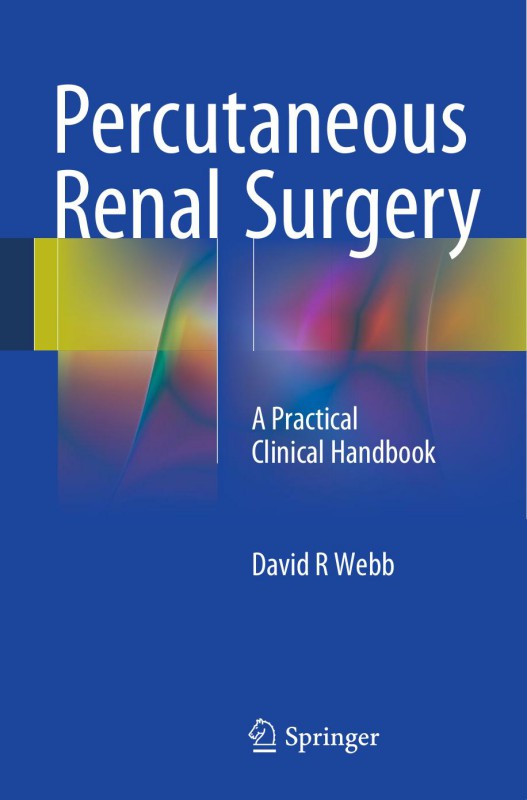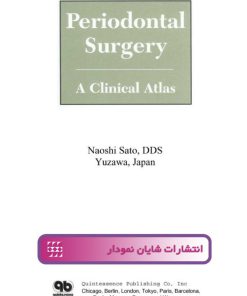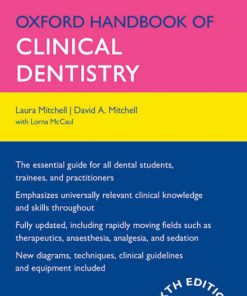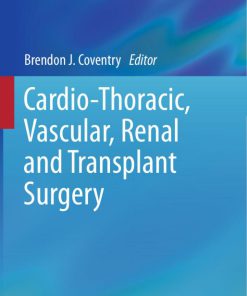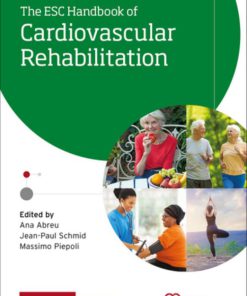Percutaneous Renal Surgery A Practical Clinical Handbook 1st edition by David R Webb 9783319228280 3319228285
$50.00 Original price was: $50.00.$25.00Current price is: $25.00.
Authors:Percutaneous Renal Surgery A Practical Clinical Handbook-Springer International Publishing (2016) , Author sort:Publishing, Percutaneous Renal Surgery A Practical Clinical Handbook-Springer International , Published:Published:Dec 2015
Percutaneous Renal Surgery A Practical Clinical Handbook 1st edition by David R Webb- Ebook PDF Instant Download/Delivery.9783319228280, 3319228285
Full download Percutaneous Renal Surgery A Practical Clinical Handbook 1st edition after payment
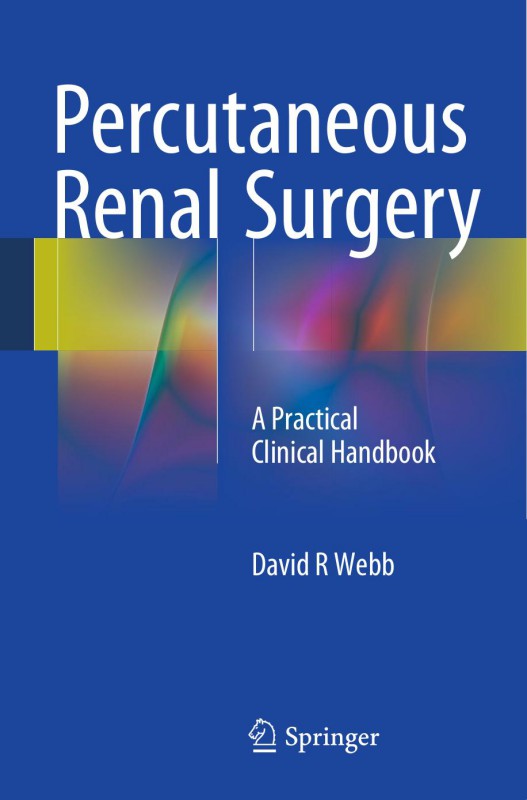
Product details:
ISBN 10: 3319228285
ISBN 13: 9783319228280
Author: David R Webb
This is the first textbook devoted entirely to percutaneous renal surgery. The text explains the basic anatomy, instruments, track dilation and creation, kidney access and surgical treatment of all complex stone scenarios. The book is written in simple sections and is extensively illustrated with more than 250 illustrations. All diagrams have been drawn by the author and reproduced by a professional graphic artist. The book describes the basic techniques, then progresses clinically through to more difficult clinical and surgical scenarios. In this way, it is akin to a “cook book” in style, that is easily referenced and readable. As percutaneous renal surgery is a team effort, the book contains descriptors for ward and theatre technicians and nurses, as well as equipment lists. The book also contains a “do it yourself” six-stage percutaneous renal surgery workshop program. This workshop can be performed in any department practising PCNL. Percutaneous Renal Surgery: A Practical Clinical Handbook represents a practical manual, suitable for medical students, nurses and technicians and is a unique manual for all urology trainees and urologists treating renal stone disease worldwide.
Percutaneous Renal Surgery A Practical Clinical Handbook 1st Table of contents:
Chapter 1: Applied Anatomy for Percutaneous Access
-
Anatomy
-
Renal
-
Good Track
-
Bad Track
-
The Body Wall
-
Lumbodorsal Fascia
-
Horseshoe Kidney
-
Anatomy of the Horseshoe Kidney
Chapter 2: Personnel and Equipment
-
Medical Personnel
-
Equipment Requirements
-
Operation Table
-
Patient Positioning
-
Imaging
-
C-ARM
-
Access
-
Hydrophilic or “Slippery” Guide Wires
-
Artery Forceps
-
Retrograde Catheter
-
Urethral Catheter
-
16 Fr Foley
-
Fixation of the Ureteric Catheter Prior to Placing the Patient Prone
-
Contrast
-
Patient Drape
-
Bairhugger: Blankets and Drapes
-
Antibiotics
-
DVT: Prophylaxis
-
Scalpel
-
Guide Wires
-
Guide Wires-Types
-
Nephrostomy Track Dilators
-
Characteristics of Various Dilators
-
Amplatz Serial Exchange Dilators
-
Telescopic “Car Aerial” Dilators (Alken)
-
Balloon Dilators
-
Webb Single-Stage Dilator
-
Technique of Insertion
-
“Mini Perc” Dilators
-
Alternative techniques of SSD
-
Amplatz Sheath
-
Considerations When Using the Amplatz Sheath System
-
Sheath Size Selection
-
Avoiding Trauma from the Amplatz Sheath
-
Puncture Needle
-
Irrigation Fluid
-
Nephroscopes
-
Instruments for Intracorporal Stone Fragmentation
-
Pneumatic Ballistic Lithotrites (Lithoclast)
-
Sonotrode
-
Equipment for Percutaneous Endoscopic Pyloplasty (or Endopyelotomy)
-
Stone Grasping Instruments
-
Graspers
-
Alligator Forceps
-
Triradiate Forceps
-
Nephrostomies
-
Cope Nephrostomy
-
Foley Balloon Catheters
-
Other Drain Tubes
-
Tubeless Nephrostomy
-
Chest Drains
Chapter 3: Indications for PCNL
-
Introduction
-
Options for the Treatment of Renal Calculi
-
Indications for PCNL
-
Current Indications for PCNL
-
Contraindications to PCNL
-
Schematic Comparison of ESWL and PCNL
-
ESWL
-
Preoperative Investigations Prior to PCNL
-
Summary: Preoperative Investigations for PCNL
-
Consent
-
Preoperative Theatre Preparation
-
Large Staghorn Calculus
-
Endoscopic Pyeloplasty
-
Calyceal Diverticulum
-
Obese Patient, Horseshoe Kidney
-
Large Impacted Upper Ureteric Calculus
Chapter 4: Percutaneous Nephrostomy
-
Percutaneous Nephrostomy (PCN)
-
Surgical Nephrostomy (SN)
-
Skinny Needle Surgical Nephrostomy (SNSN)
-
Radiological Nephrostomy (RN)
-
Surgical Nephrostomy
-
Puncture Technique
-
Parallax
-
Step 1
-
Technique of Percutaneous Renal Puncture
-
Lithotomy Position
-
Step 2
-
Prone Position of the Patient
-
Patient Safety
-
Theatre Set-Up
-
Radiological Nephrostomy
-
Definition
Chapter 5: Routine PCNL
-
Track Dilatation
-
Track Size
-
Track Dilatation
-
Aim
-
Principles
-
Kinked Guide Wire
-
The Body Wall Component of the Nephrostomy Track
-
The Skin
-
Lumbodorsal Fascia
-
Track Dilation
-
Guide Wire
-
Dilator
-
Commencement of the Track and Kidney Dilation
-
Nephroscopy and Stone Removal
-
Plan
-
Nephroscopes
-
Blood Clots
-
Clot Removal
-
Universal Guide Wire
-
The Creation of a Universal Guide Wire
-
Advantages of a Universal Guide Wire
-
Stone Fragmentation
-
Alternative Energy Sources for Stone Fragmentation
-
Optimal Lithotrites for Stone Fragmentations
-
Aims of Stone Fragmentation
-
The Sonotrode
-
Choice of Lithotrite
-
Ultrasonic Lithotrite (Sonotrode)
-
Pneaumatic Lithoclast
-
Summary
-
Stone Extraction for PCNL
-
Instruments
-
Alligator Forceps
-
Triradiate Forceps
-
Baskets
-
Summary
-
Stone Clearance
-
Assessment of Stone Clearance at PCNL
-
Nephrostomy Post PCNL
-
Nephrostomy Types
-
“Cope” Loop Nephrostomy
-
Foley Catheter
-
Tube Nephrostomy (Splinted)
-
Tubeless Nephrostomy
-
Technique of “Cope” Nephrostomy Insertion Following PCNL
-
Alternative Method of Insertion of the “Cope” Loop Nephrostomy
-
Lost Nephrostomy
-
Suturing the “Cope” Nephrostomy Tube to the Skin
-
Technique of Cope Nephrostomy Suture
-
Post-operative Care of the Nephrostomy
-
Nephrostogram
Chapter 6: Complex PCNL and Antegrade Endopyelotomy
-
Complex Calculi
-
Complex Anatomy
-
Introduction
-
Advanced Skills Required for Difficult PCNL
-
Scenario One: Large Infection-related Staghorn Calculus
-
Aim
-
Potential Problems
-
Preoperative Tests, Treatment and Precautions
-
CT-IVP
-
Pyonephrosis
-
Difficulties Encountered with Punctures for Complete Staghorn Calculi
-
Technique of Creating an Endoscopic Nephrotomy
-
Supplementary Target Punctures during Staghorn Calculus Removal
-
Scenario Two: Complex Recurrent Infection Calculi Associated with a Chronically Infected Urinary
-
Indications for Stone Removal
-
Aims of Treatment
-
Pre-admission
-
Preoperative Preparation
-
Other Preparation
-
Theatre: Additional Equipment
-
Aims of Surgery
-
Ileal Conduit
-
Surgical Approach
-
Scenario Three: Calculi Within Calyceal Diverticulae
-
Anticipated Difficulties
-
Aims of the Puncture for Treatment of Stones in a Calyceal Diverticulum
-
Preparation Prior to Surgery for Calculi in Calyceal Diverticulae
-
CT-IVU: Points to Observe
-
Potential Scenarios After Needle Puncture of a Calyceal Diverticulum
-
Options
-
“Y” Puncture Technique
-
Application of the “Y” Puncture for Access into a Calyceal Diverticulum
-
If the Guide Wire Will Not Enter the Diverticulum and There Is No Adjacent Calyx
-
Stone Removal from a Calyceal Diverticulum
-
Drainage
-
Scenario Four: The Management of Calculi in a Narrow or Poorly Draining Calyx, or a Stone Formi
-
Scenario Five
-
Previous Renal Surgery
-
Renal Scarring
-
Summary of the Management of Patient Undergoing PCNL in the Presence of Significant Renal and
-
Scenario Six
-
Obese Patients
-
Preoperative Planning
-
CT/IVU
-
Nephroscope
-
Sheath
-
Scenario Seven
-
Horseshoe Kidney
-
Preoperative Planning
-
CT–IVU
-
Puncture
-
Track
-
Endoscopy
-
Operative Plan
-
Scenario Eight
-
Large-Impacted Pelviureteric Junction and/or Upper Ureteric Calculus
-
Large Upper Ureteric Calculus
-
Plan for Antegrade P
People also search for Percutaneous Renal Surgery A Practical Clinical Handbook 1st :
biopsy renal percutaneous (surgery)
techniques in percutaneous renal stone surgery
percutaneous renal stone surgery
what is a percutaneous kidney biopsy
You may also like…
eBook PDF
Periodontal Surgery A Clinical Atlas 1st Edition by Naoshi Sato ISBN 0867153776 9780867153774
eBook PDF
Percutaneous Renal Surgery 1st Edition by Manoj Monga, Abhay Rane ISBN 1118670930 9781118670934

